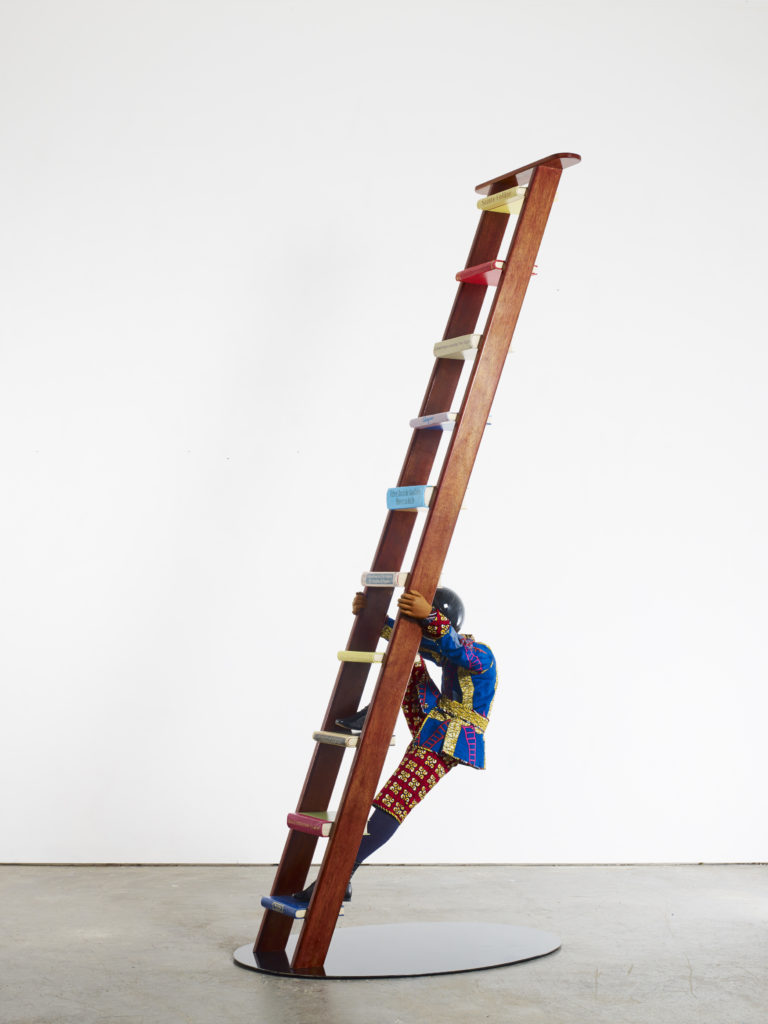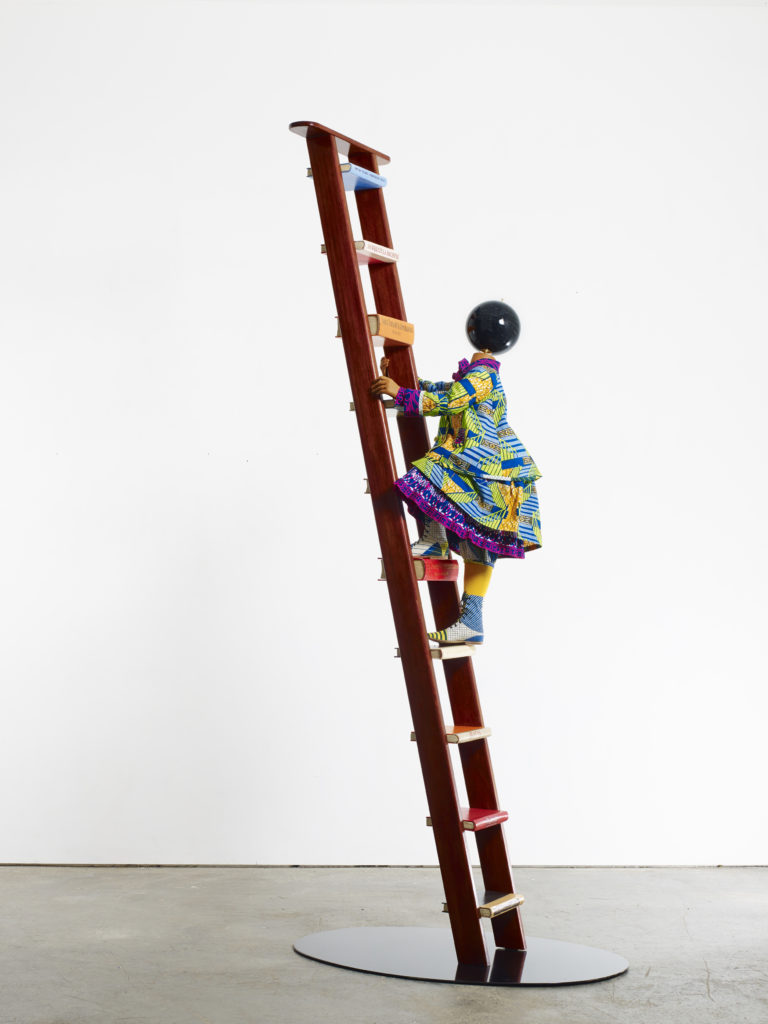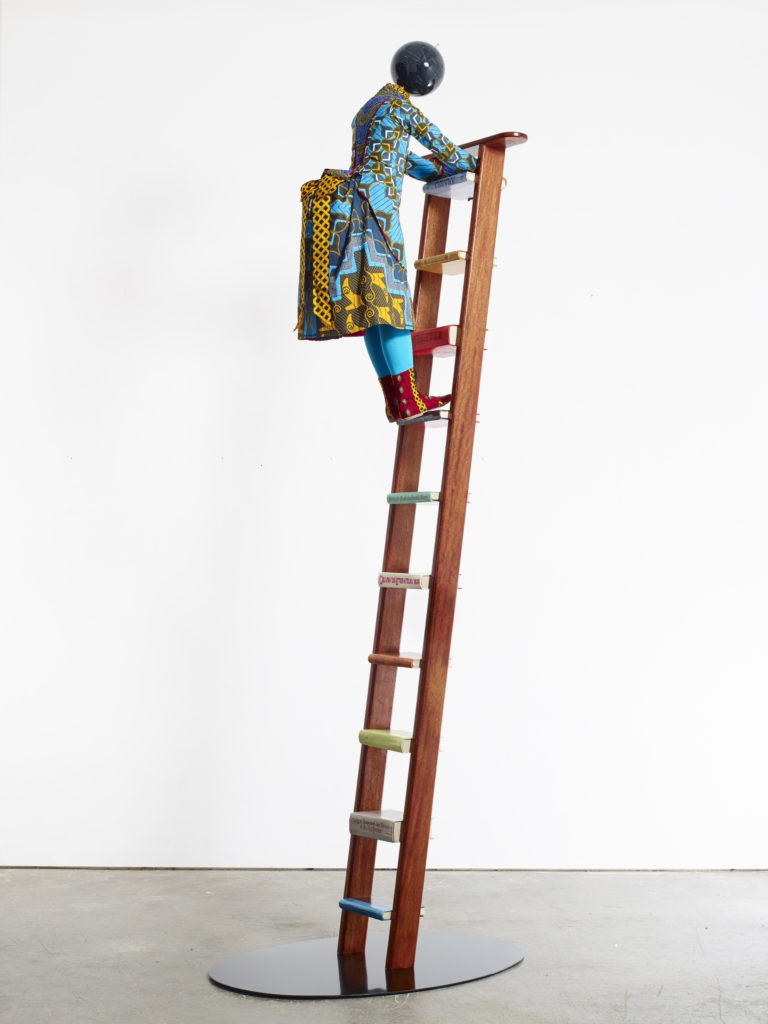As humans we are (by nature or design) stakeholders: we act with intention and become invested in what we have made. Play is (by nature) impermanent: sometimes attached to outcomes, sometimes only loosely so, or to outcomes that are negotiable. “Learning to play” is a contradiction in terms, if we understand it to be about the orderly acquisition of knowledge. But if learning is moving amid grid and chaos, if learners are permeable to the knowledge that exists both within and outside us, then learning is play—and it entails risk and transformation: the risk of harm, of loss, of being lost; the transformation of ourselves in the universe—as happens to Max, when he goes off with the wild things.Jack Halberstam, “The Wild Beyond: With and For the Undercommons,” in Stefano Harney and Fred Moten, The Undercommons: Fugitive Planning and Black Study (Brooklyn: Autonomedia, 2013), 7, 8, 10, 11.
Such encounters can happen anywhere someone is open, although Lauren Berlant and Michael Warner observe that they are more likely to occur in an urban site, “always a host space,” full of variety:
One of the most disturbing fantasies in the zoning scheme…is the idea that an urban locale is a community of shared interest based on residence and property… . But…the local character of the neighborhood depends on the daily presence of thousands of nonresidents… . ‘The right to the city’ (Henri Lefebvre) extends to those who use the city.Laurent Berlant and Michael Warner, “Sex in Public,” Critical Inquiry 24, no. 2 (Winter 1998): 547–66.
Wanting to continue this line of exploration, the following semester Jody and I join a co-teacher in economics in requiring our students to make bi-weekly jaunts into Philadelphia. This time they do so under the aegis of an interdisciplinary course cluster called a 360°.“360° Course Clusters,” Bryn Mawr College, 2016. Twelve students enroll together in three classes co-designed around the topic of ecological education. Experiencing and theorizing what it means to live and learn in the overlapping spatial zones of built and natural environments, including the diversity and disequilibrium of the natural world, again raises questions about the binaries of “inside” and “outside,” owned and stolen, permanent and “just passing through.” Rather than explicit instructions to “play,” however, this time ‘round, we offer a much more directed social and environmental justice agenda, with the specific goal of addressing inequity head-on.
Our group visits complex and highly compromised urban spaces of retreat and reflection—Wissahickon Valley Park, the John Heinz National Wildlife Refuge, Laurel Hill Cemetery—and once (when an ice storm prevents our planned travel to an arboretum) a special (and especially vivid) exhibit about colonialism at the Barnes Foundation, Yinka Shonibare’s “Magic Ladders.”The Barnes Foundation, “Yinka Shonibare MBE: Magic Ladders.” January 24–April 21, 2014.
When our transportation arrangements fail a second time, we spend a morning at Harriton House, a former plantation, once farmed by enslaved people, from whose grounds the College had been created (we discover that there is a graveyard on campus, where some of the house servants are buried). Across the river from Philadelphia, in Camden, which Rolling Stone magazine termed “America’s Most Desperate Town: Apocalypse, New Jersey,”Matt Taibbi, “Apocalypse, New Jersey: A Dispatch from America’s Most Desperate Town,” Rolling Stone, December 22, 2013. we make three visits to The Center for Environmental Transformation, where we spend half-days working on a community-based gardening project with a class of neighborhood fifth graders.
We are joined in these pursuits by an artist, who works with us to design a range of activities, guiding students on field trips and in responding to them by working with the material “stuff” of textiles and sculptures, paintings, photographs, and songs. All of this rather expansively suggests how creating in and from the outside can disrupt settled habits of classroom learning, providing alternative ways of perceiving, doing, and being.
Some of the students embrace this dimension of the cluster, report that it offers ways other than the usual academic modes of understanding and expressing, and helps them confront fears about doing creative work. At the same time—since this rich additional dimension is a demanding one—there is a looming sense of overwhelm. Several of the college students are unwell, and the winter weather is harsh, so we frequently find ourselves low in number, occasionally not meeting at all, or meeting against all odds. One Friday afternoon, our planned trip to Mill Grove, the home of John James Audubon, an early naturalist and artist, has to be scuttled because the roads to the west of the city are ice-covered. We head downtown instead, to see the exhibit of Yinka Shonibare’s “Magic Ladders” at the Barnes Foundation.
I admit that I am seriously dragging my feet this morning—it seems as if there are TOO MANY OBSTACLES, and I am convinced that the universe is telling us to GIVE UP. I feel that we are trying too hard to make something happen…
But what happens is something of a revelation.



When we finally arrive, I am surprised and delighted by the Shonibare exhibit: grabbed first by the whimsy, by the color, and also as immediately by the complex representation of colonializing educational practices. Like others in our group, I am particularly struck by the “crossbred cultural background” of the Dutch wax textiles Shonibare showcases here, and later do a little reading to learn the history of how the Dutch came to peddle Indonesian-inspired designs to West Africa.Julia Felsenthal, “The Curious History of ‘Tribal’ Prints: How the Dutch Peddle Indonesian-Inspired Designs to West Africa,” Slate (March 1, 2012). What strikes me in this account is how “ecological” it is—how demonstrative that “everything is connected,” not just biologically, but culturally and commercially (the web site for Vlisco, for example, offers free delivery to Africa and elsewhere). Like the students (including some in this class), who attended the Black History Month dinner the night before, and found these fabrics on the tables, I am implicated in this chain: during a recent craft fair at the College, I and some colleagues sold Shakoshi bags, to raise money for the book group we offer in prison.
Shonibare’s work is nothing if not playful—a very serious kind of play that showcases it as tantalizingly dangerous, political, and personal: in the form of the artist, his patron Barnes, and the figures that seem to illustrate and mock both the integrity of identity and identity politics. The exhibit gets me thinking about the sorts of appropriations and re-appropriations that have been enabled by colonialism; it gets me to apply some of my understanding of eco-systems, particularly the imbrication of everything in everything else, to social, political, historical dimensions. I begin to think differently about the assumption underlying “Play in the City”: that we could leave the suburbs for a place apart, a place where we could be other than and separate from what we have been.
One of our students goes much further. In “Colonizing the Museum Exhibit” (alternatively titled “What’s at the top of a magic ladder?”), Sara Gladwin develops a critique of conventional standards of educational value:
I really did like the exhibit. It was thought provoking, and each piece was beautifully intricate. I especially appreciated the absence of subtlety in the allusions depicted; Shonibare unabashedly allowed the influences that shaped the artwork to be present and visible on the work…
As I was walking around the exhibit though, I felt distracted. I had come into the museum with a question already on my mind, planted there during our obstacle-filled journey to begin our field trip. I couldn’t stop asking myself whether or not we were truly being ecologically literate if we weren’t reading the signs from our environment that were telling us to stay home. What would it mean if we had made the choice to stop fighting the signs? Would we all have gone back and written posts reflecting on our environment that had obstructed our endeavor to become more ecologically literate, conscious and/or responsive through a field trip? Would we have opted for a different kind of trip, one that didn’t rely on a phone call or vans or train schedules? Might we have found ourselves talking a walk through the Morris Woods, listening to our environment, waiting for more signs from it?
As I circled the room, I realized that debating about what could have happened didn’t seem entirely ecological anymore either. We had arrived to Barnes now, and I needed to listen to my current surroundings. I began looking for answers in the art, though I only uncovered more questions. I wondered about the placement of the mirror on the parlor wall, and whether or not there was anything intentional about what you could see in the reflection. Did I become a part of the room? What about the artwork in the background of the reflection?.…I wondered about the boy, in the center of the left side of the room, casually lounging on his stomach and reading, and how I didn’t know anyone seemingly that young who would willingly read Plato. I bent down and read along with him, although I can’t recall any of the two pages that were on display, other then something about a “theory of ideas.” I left the side room almost immediately upon entering it, seeing that there were only men sitting at the table.

I examined every line of each description, and wondered who had written them, and whether Shonibare approved of the interpretations. Then I read the titles of every book on the magic ladders. There was something unsettling about the metaphor of the ladder. I started to feel consumed with a new question: what’s at the top of a magic ladder?
I found myself walking out of the exhibit, and wandering around Barnes. I felt directionless but somehow not without purpose. I was searching for something, an answer; but I wasn’t even sure what the question I was asking meant. As I walked, I was reminded of a piece titled Walking, by Henry David Thoreau, in which he writes:
…the art of Walking, that is…so to speak…sauntering; which word is beautifully derived “from idle people who roved about the country, in the middle ages, and asked charity, under pretence of going à la sainte terre”—to the holy land, till the children exclaimed, “There goes a sainte-terrer”, a saunterer—a holy-lander… Some, however, would derive the word from sans terre, without land or a home, which, therefore, in the good sense, will mean, having no particular home, but equally at home everywhere. For this is the secret of successful sauntering… the Saunterer, in the good sense, is no more vagrant than the meandering river, which is all the while sedulously seeking the shortest course to the sea… . For every walk is a sort of crusade…
I felt the different textures along the walls and sought out the corners of each room; experiencing the physical boundaries of the space as tactilely as possible… . I ventured downstairs. I paid close attention to the feeling of my hand sliding down the stair railing, and heaviness in the feet as they collide with the floor and the floor pushes back. I think what I really wanted to touch and feel were those magic ladders; to put my weight on the cover of each book. I continued this kind of sensory exploration, until I felt that I had found another piece of the puzzle. It was a single sentence about the “Magic Ladder” exhibit, explaining that the books that Shonibare used for the ladder steps had come from the personal library of Albert C. Barnes. These books, which metaphorically provided the necessary knowledge to ascend the ladder, came from the creator of the museum. I started to further distrust the implication of the ladder, which seemingly dictates a hierarchy of knowledge. I became uncomfortable with the limited possibility of movement offered by a ladder, in which you could only go up or down… . The ladder, when applied to my life, becomes a metaphor for feeling trapped.
What is so important at the top of a magic ladder?
And if we get to the top, will we be too far removed from ground to actually perceive the environment we live in?sara. gladwin, “Colonizing the Museum Exhibit,” paper written for 360°, Bryn Mawr College, February 17, 2014.
Sara raises a host of questions about what it means to be alive to the present in all of its ecological complexity—and then her physical and imaginative “sauntering” moves into direct confrontation with the ways in which different positions mark all encounters, distress all play:
…I walk down the stairs of the Barnes and…now I am worried about Henry and me, and what we think it means to walk.
I am picturing a scene, narrated by Virginia Woolf. The figure of a woman as she is walking, attempts to enter the library of a famous university:
—but here I was actually at the door which leads into the library itself…instantly there issued, like a guardian angel barring the way with a flutter of black gown instead of white wings, a deprecating, silvery, kindly gentleman, who regretted in a low voice as he waved me back that ladies are only admitted to the library if accompanied by a Fellow of the College or furnished with a letter of introduction.
Not everyone is permitted to feel equally at home everywhere.
I think of the women I work with at [the] correctional facility. I think of their hunger for books. I think of the doors that shut as I walk out and leave them behind.
Sauntering, or the ability to be equally at home everywhere, is a beautiful but not always accessible art. For as much privilege as it takes to climb the magic ladder, and ascend to the top, it seems as though a certain amount of privilege is required to get off the ladder, to be a saunterer in the Thoreauvian sense. “If you are ready to leave father and mother, and brother and sister, and wife and child and friends, and never see them again—if you have paid your debts, and made your will, and settled all your affairs, and are a free man—then you are ready for a walk.”sara.gladwin, “What’s at the top of a Magic Ladder?”, paper written for 360°, Bryn Mawr College, March 17, 2014.
As last semester, playing “outside” this time ‘round leads to an interrogation of what happens—and can fail to happen—in classrooms. Sara articulates here some of the far-reaching implications of our decision to leave the college and encounter the world of play and art, of woods, fabrics, and ladders. What might it mean, she probes, not just to leave the classroom on a field trip, but to use that trip to step off the “magic ladder” of the educational system, and learn to saunter on one’s own? Who is free to do this, and who is prevented from doing so? What are the risks? Who and what is threatened when we jump the grid?

 sara.gladwin
sara.gladwin